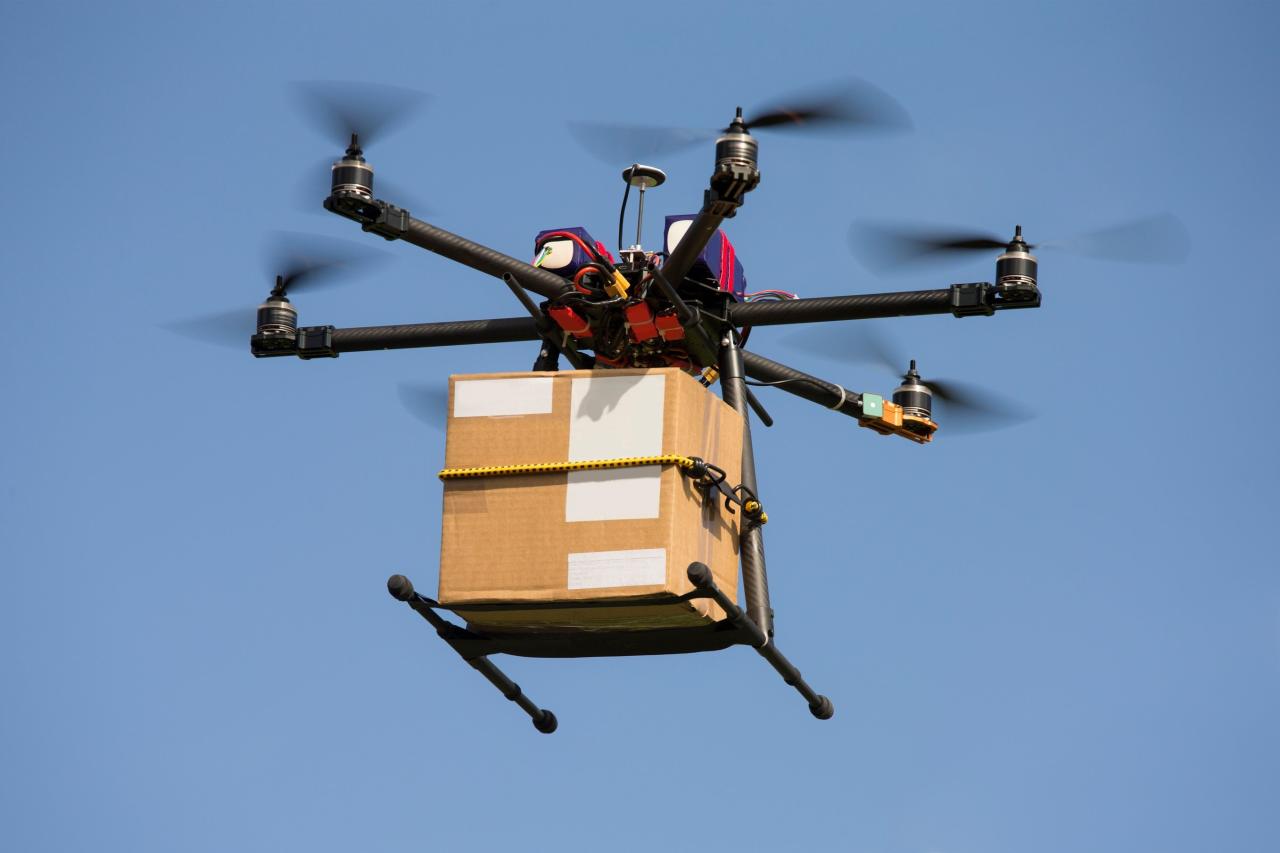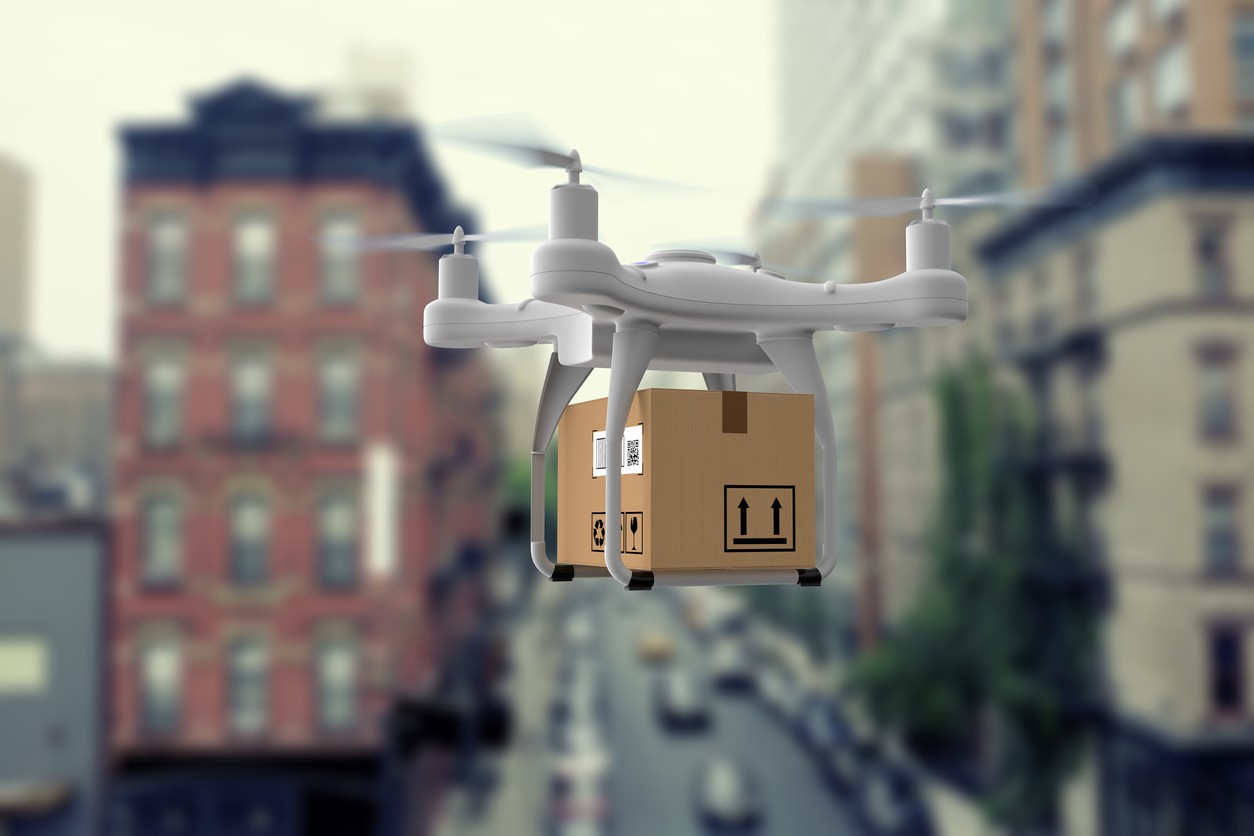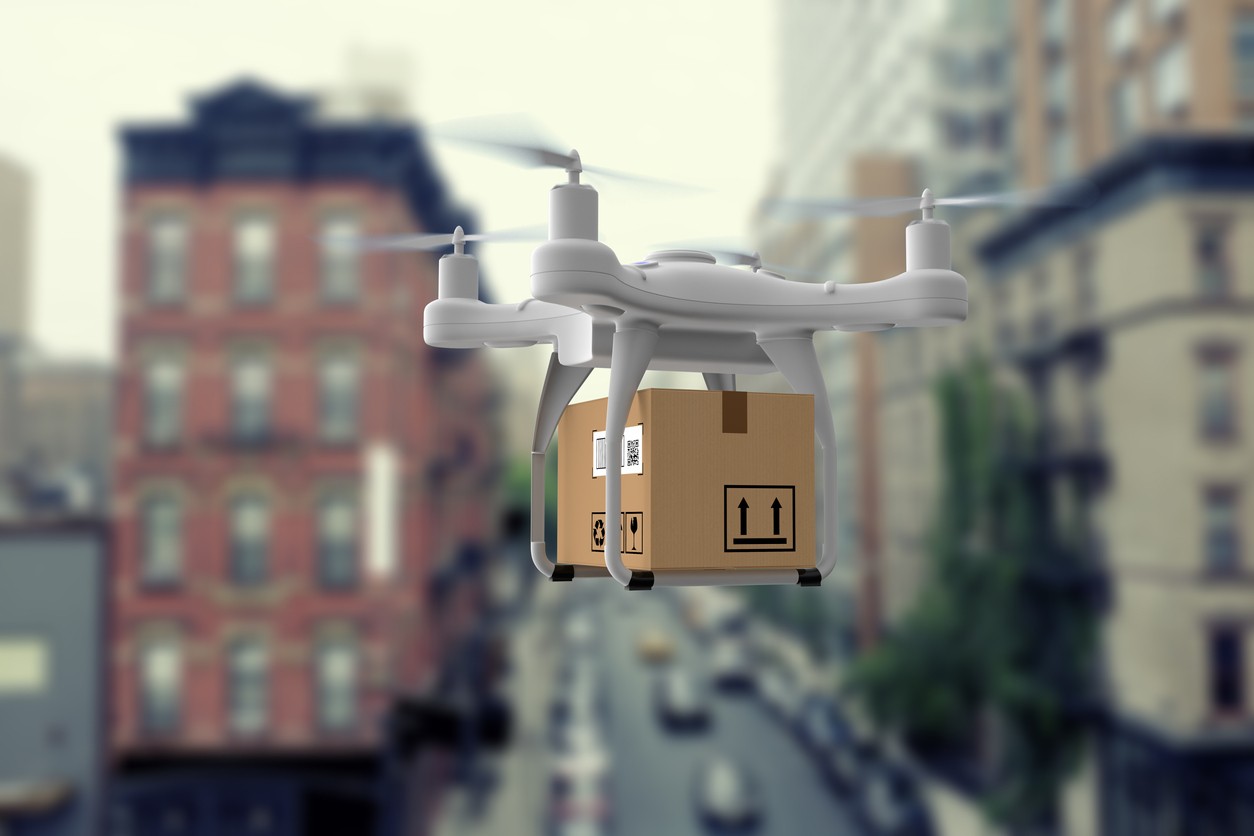Amazon drone delivery locations are rapidly expanding, revolutionizing how we receive packages. This guide explores the current status of Amazon’s drone delivery program, examining its geographical reach, infrastructure requirements, customer experiences, and environmental impact. We’ll also delve into future expansion plans and technological advancements shaping this exciting delivery method.
From the types of packages eligible for drone delivery to the safety protocols in place, we’ll cover the key aspects of this innovative service. Understanding the infrastructure needed, regulatory hurdles, and societal implications is crucial to appreciating the full scope of Amazon’s ambitious project. We’ll even compare drone delivery to traditional methods, weighing the pros and cons for both customers and the environment.
Amazon Drone Delivery Program: A Comprehensive Overview

Amazon’s drone delivery program, known as Amazon Prime Air, represents a significant leap in logistics and last-mile delivery. This program aims to revolutionize the way we receive packages, offering faster delivery times and increased efficiency. This overview details the current status, infrastructure requirements, customer experience, environmental considerations, and future expansion plans of this innovative service.
Current Amazon Drone Delivery Program Status

Amazon Prime Air’s geographical reach is currently limited to specific locations in the United States. The service is not available nationwide, and expansion is gradual, dictated by regulatory approvals and infrastructure development. The types of packages eligible for drone delivery are also restricted to those that meet specific weight and size limitations.
| State | City | Start Date (Approximate) | Number of Delivery Zones |
|---|---|---|---|
| California | Lockeford | 2022 | 1 |
| Texas | College Station | 2022 | 1 |
| California | El Segundo | 2023 | 1 |
| Texas | San Antonio | 2023 | 1 |
In areas where both drone and traditional delivery are available, drone delivery often offers significantly faster delivery times, sometimes within hours of ordering, compared to the typical 1-2 day delivery time of ground shipping.
Infrastructure Requirements for Drone Delivery Locations

Successful drone delivery operations necessitate a robust infrastructure. This includes dedicated landing pads, weather-resistant charging stations, and reliable communication networks for real-time drone tracking and control.
Establishing these locations requires navigating various regulatory hurdles, including obtaining necessary permits and approvals from the Federal Aviation Administration (FAA) and local authorities. Safety protocols are paramount, encompassing measures like redundant systems, obstacle avoidance technology, and rigorous pilot training to mitigate potential risks.
Customer Experience and Impact

Early customer feedback on Amazon Prime Air has been overwhelmingly positive. The novelty and speed of the service are major draws.
- “It was amazing to see the drone arrive and land in my backyard! The package was there in minutes.”
- “So much faster than traditional delivery. I received my order within hours.”
- “It was a smooth and seamless experience. The whole process was easy to follow.”
A hypothetical customer survey could include questions about ease of use, delivery speed, package condition, and overall satisfaction. This feedback is crucial for continuous improvement.
| Benefit | Drawback | Impact on Customer | Mitigation Strategy |
|---|---|---|---|
| Faster delivery | Limited geographical availability | Increased convenience, reduced waiting time | Expand service area gradually |
| Reduced delivery costs (potentially) | Weight and size restrictions on packages | Lower prices for eligible items | Develop drones with greater payload capacity |
| Novelty and excitement | Potential for noise pollution | Positive perception of the service | Utilize quieter drone designs |
Environmental and Societal Considerations, Amazon drone delivery locations
The environmental impact of drone delivery involves evaluating factors such as energy consumption and noise pollution. While drones are generally more fuel-efficient than traditional delivery vehicles, their noise levels could be a concern in residential areas. Societal impact includes potential job displacement in the delivery sector and changes in urban landscapes due to the need for drone infrastructure.
Compared to traditional delivery methods, drone delivery has the potential to reduce carbon emissions per package due to lower fuel consumption and fewer vehicle miles traveled, however, the manufacturing and disposal of drones themselves also need to be considered.
Amazon’s planning drone delivery locations is a huge undertaking, needing careful consideration of airspace and infrastructure. Recent news, like this report on a drone crash in Paris , highlights the safety challenges involved. These incidents underscore the importance of robust safety protocols as Amazon expands its drone delivery network and selects new locations.
Future Expansion and Technological Advancements
Amazon’s future expansion plans likely involve increasing the number of delivery locations, expanding into new geographic areas, and potentially offering drone delivery for a wider range of package types. Advancements in drone technology, such as increased range and payload capacity, will be key drivers of expansion.
AI and machine learning will play a crucial role in improving the efficiency and safety of drone delivery systems. Autonomous navigation, optimized flight paths, and predictive maintenance are some examples of AI-powered improvements.
Last Recap
Amazon’s drone delivery program is more than just a futuristic concept; it’s a rapidly evolving reality reshaping logistics and consumer expectations. While challenges remain, the potential benefits – from faster delivery times to reduced environmental impact – are significant. As technology continues to advance and regulations adapt, we can expect to see even more widespread adoption of drone delivery in the years to come, transforming how we receive our online purchases.
Amazon’s expanding drone delivery network is aiming for more locations, but safety is key. Recent incidents, like the one described in this article about the orlando drone show accident , highlight the potential risks involved in drone operations. Understanding these risks is crucial for Amazon to ensure safe and reliable drone delivery to your doorstep.
Essential FAQs: Amazon Drone Delivery Locations
How much does Amazon drone delivery cost?
Currently, Amazon drone delivery is often integrated into existing Prime memberships and doesn’t typically incur extra charges. However, eligibility depends on location and package type.
What types of packages are ineligible for drone delivery?
Items that are oversized, fragile, or require special handling are generally not eligible. Amazon provides guidelines on their website about eligible items.
What happens if my drone delivery is delayed or fails?
Amazon’s customer service will handle any issues, potentially rescheduling the delivery or switching to a traditional delivery method.
So you’re curious about where Amazon’s delivering packages via drone, huh? It’s still pretty limited right now, focusing on specific areas for testing. To get a better idea of the tech involved, check out the advanced drone systems used by companies like sky elements drones ; their work gives you a glimpse into the complexities of large-scale drone operations.
Understanding their tech helps you appreciate the challenges Amazon faces in expanding its drone delivery locations.
How safe is Amazon drone delivery?
Amazon employs extensive safety protocols, including advanced sensors, redundancy systems, and strict flight paths, to minimize risks.
